
Since the introduction of the non-fungible token concept, the NFTs were touted as a new way for digital creators to express themselves while protecting their digital ownership, allowing artists and brands to share and protect their work as never before.
NFTs became one of the most significant and resilient contemporary innovations in tech, finance, art, fashion, sports, and memes. Most crypto enthusiasts consider it the future of digital art, offering artists new ways of earning from their creations.
Let’s dig deeper into the topic of NFTs to understand what it is, how to use it and how to benefit from it.
NFT stands for a non-fungible token, meaning it’s unique and irreplaceable. The main difference between an NFT and cryptocurrency is trading value. NFTs can’t be exchanged for equal value for each other because they possess a unique digital signature.
Anything, including digital files, mp3s, or MP4 video files that are tokenized and stored on the digital ledger. Practically, any digital file can be an NFT, for example, a viral meme or even the first-ever posted tweet or street art work.
NFTs are bought and sold on the NFT marketplaces like Open Sea, Rarible, Nifty Gateway, and others, which usually function as digital auction houses where bidders can suggest their price and pay with cryptocurrency, for example, Bitcoin, Ethereum or Dogecoin. As most of the marketplaces are built on Ethereum, Ether is the most common cryptocurrency used for purchasing non-fungible tokens.
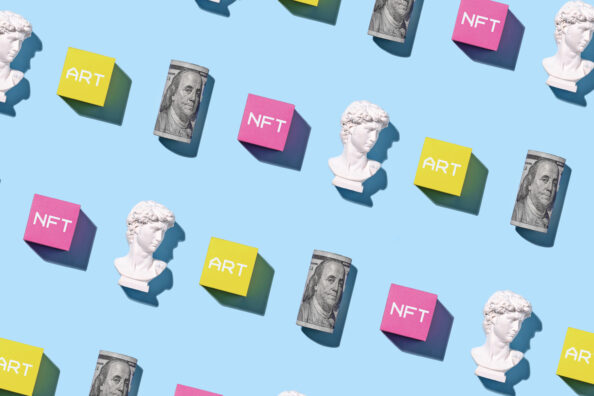
Basically, NFT art is a digital representation of an item that can be traded, used, or stored on a blockchain. NFT only exists on blockchain, where the ownership of it is recorded.
When NFTs are sold for money, this means there are new opportunities for artists and collectors to own the work they create.
Almost anything can fall into the NFT art category, from the regular graphic art to GIFs, animations, music and emojis. With the power of smart contracts, anyone can create an NFT file, which gives any individual or organization unlimited control over what their artwork looks like and how it behaves in different situations. This type of artwork has never existed before, which makes it both intriguing and intriguing to know what it will become over time.
The roots of NFT art trace back to 2012, when the concept of digital collectibles was introduced in the “Colored Coins” paper by Meni Rosenfield. Although initially designed for Bitcoin, these coins hinted at the future of tokenized assets on the blockchain.
In 2014, digital artist Kevin McCoy created what is widely recognized as the first NFT — Quantum — on the Namecoin blockchain. That same year, Counterparty emerged, allowing users to create and trade custom tokens, laying the groundwork for what would become the crypto art movement.
By 2017, NFTs gained mainstream visibility through projects like CryptoPunks by Larva Labs, CryptoKitties, and Decentraland. These projects introduced non-fungible tokens as unique, ownable digital items on the Ethereum blockchain using the ERC-721 standard. CryptoKitties was so popular it famously congested the Ethereum network.
2021 marked a turning point as NFTs exploded into public consciousness. Auction houses like Christie’s and Sotheby’s began selling high-profile digital artworks, including Beeple’s Everydays: The First 5000 Days for over $69 million. The metaverse and gaming industries embraced NFTs, and celebrities and major brands started launching collections.
By late 2021, video game studios began integrating NFTs into gameplay, enabling asset ownership and trading through ERC-721 and ERC-1155 tokens.
In 2022, the market saw both innovation and volatility. Ethereum gas fees and environmental concerns pushed artists and platforms toward alternative blockchains like Tezos, Polygon, and Solana. Despite the crypto bear market, platforms like Foundation, Zora, and Objkt grew in popularity.
2023–2024 has seen a shift toward utility NFTs, integration with AI-generated art, and the rise of Ordinals on Bitcoin, allowing NFTs to be minted natively on the Bitcoin blockchain — a major technical milestone. Meanwhile, brands like Nike, Starbucks, and Adidas launched NFT loyalty programs and digital collectibles, expanding NFT art into fashion and retail.
As of 2024, NFT art continues to evolve, blending with emerging technologies such as generative AI, AR/VR, and interactive media, while debates around royalties, ownership rights, and regulation shape its future.
The NFT market experienced explosive growth in 2021, with total sales reaching an estimated $17 billion across all segments by the end of the year. According to data from NonFungible.com and Chainalysis, NFT art alone accounted for over $2.9 billion in primary and secondary sales in 2021. The boom was fueled by media coverage, celebrity involvement, and speculative investment.
However, in 2022, the market experienced a sharp contraction. Between January and September, NFT trading volume dropped by over 90%, a result of the broader crypto bear market, rising inflation, and waning public interest. Still, high-value sales and loyal collector communities kept the ecosystem alive. For example, major digital artworks continued to sell for hundreds of thousands—even millions—of dollars on platforms like SuperRare and Foundation.
By early 2023, the overall NFT market capitalization recovered slightly, reaching approximately $7.13 billion. NFT art, though representing a smaller share compared to gaming and collectibles, remained a vital segment, estimated at over $1.2 billion in value.
In 2024, the NFT art market began to stabilize. This shift came with the rise of utility-driven NFTs, AI-generated art collections, and increased adoption by traditional art institutions. Platforms like Sotheby’s Metaverse and Christie’s 3.0 introduced curated digital art sales with provenance, attracting a new wave of serious collectors.
The launch of Bitcoin Ordinals and layer-2 solutions such as Zora Network and Base have also contributed to NFT growth by reducing fees and onboarding new creators. Meanwhile, dynamic NFTs, on-chain generative art, and royalty-enforced standards are opening up new monetization paths for artists.
Although the speculative frenzy of 2021 has cooled, the market for NFT art continues to mature, shifting toward long-term value, creator-first tools, and more sustainable growth.
While both NFT digital art and traditional art serve as creative expressions and can be bought, sold, and collected, they differ significantly in format, ownership, value systems, and distribution models. Here’s how they compare:
Medium and Format
Ownership and Provenance
Royalties and Creator Revenue
Distribution and Market Access
Interactivity and Innovation
Collecting and Investing
NFT digital art doesn’t replace traditional art—it complements it. While traditional art continues to hold cultural and emotional significance, NFT art introduces new ways to monetize creativity, engage communities, and secure ownership in a digital-first world.
Essentially, NFTs are like physical collector’s items, only digital. So, instead of getting an actual oil painting to hang on the wall, the buyer gets a digital file instead.
They also get exclusive ownership rights. That’s right: NFTs can have only one owner at a time. NFTs’ unique data makes it easy to verify their ownership and transfer tokens between owners. The owner or creator can also store specific information inside them. For instance, artists can sign their artwork by including their signature in an NFT’s metadata.
In the NFT art life cycle, there are four stages: Creation, Uploading to the blockchain, Selling, and Distributing.
Stage 1 . Creation.
The first stage is the creation of an NFT. This can be done by anyone with a computer or a smartphone. For example, an artist can create a unique piece of art that they want to share with others.
Stage 2. Uploading to the blockchain.
Next comes uploading it to the blockchain. In order to do this, you have to register an account on one of the popular NFT platforms such as OpenSea, Rarible, Mintable, or Foundation. These platforms allow you to upload your digital artwork, mint it as an NFT, and set up a sale page so that people can purchase your work directly from your account.
Stage 3. Selling and Distributing.
The artists then need to sell their piece of art and distribute it across various platforms that offer NFTs, such as OpenSea, Rarible, etc., where users can buy pieces of art from other creators/artists as well.
NFT art has revolutionized how visual art is created, collected, and valued. No longer limited to physical works, buyers can now purchase and authenticate digital creations using blockchain technology. These digital assets range from highly curated pieces sold at auction to memes and viral content that have become cultural artifacts.
One of the most iconic examples of NFT art is Beeple’s “EVERYDAYS: THE FIRST 5000 DAYS”, which sold at Christie’s in March 2021 for $69.3 million, making it one of the most expensive digital artworks ever sold. This monumental sale helped cement NFTs as a legitimate art medium.
NFTs have also transformed internet culture. Viral memes like:
Another prominent NFT artist is XCOPY, a London-based crypto artist known for his dystopian, glitch-heavy animations. He has sold over 9,000 NFTs. One of his standout pieces, “All Time High in the City,” sold for nearly $7 million in 2021 on the SuperRare platform.
Tyler Hobbs, a generative artist behind the celebrated “Fidenza” collection, has also seen major success. His algorithmic artwork explores randomness and structure. One of his pieces, “Fidenza #313,” sold for over $3.3 million on Art Blocks.
Dmitri Cherniak, known for his “Ringers” series, explores algorithmic minimalism. His “Ringers #879”, sometimes referred to as the “Goose,” became a landmark sale when it was auctioned for $6.2 million in 2023 at Sotheby’s.
NFT art continues to blur the line between traditional aesthetics and blockchain innovation, allowing digital artists to reach global audiences, earn royalties, and define the future of creative ownership.
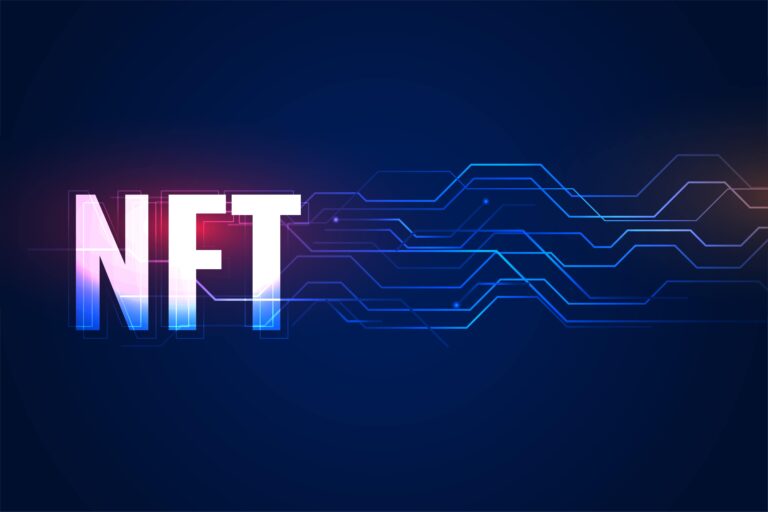
NFTs are the hot topic of the moment, with celebrities taking the plunge and making their own non-fungible tokens.
Rapper Eminem has made US$1.78 million from his first collection of ‘Shady Con’ NFTs on Nifty Gateway. Iconic artist Damien Hirst has launched his latest project “The Currency”, which is a mix of physical art and digital NFTs. Each of the 10,000 unique hand-painted A4 sheets of the project comes with a unique NFT that is worth US$2,000.
Auction house Christie’s has also joined the NFT movement, teaming up with the Andy Warhol Foundation to mint 5 of the artist’s 1985 works, which were sold for a whopping US$3.4 million. Hong Kong filmmaker Wong Kar Wai has also made his mark in the NFT space, turning never-before-seen footage from his film In The Mood For Love (2000) into an NFT.
The latest addition to this list of celebrities is none other than Paris Hilton, Queen of Pop Culture and Entrepreneur. She recently dropped her first NFT with Super Plastic, a vinyl toy, and digital collectibles company backed by notable investors such as Google Ventures and Justin Timberlake.
Rapper Snoop Dogg has long embraced NFTs. He initially released his collection called “A Journey with the Dogg”, featuring personal memories, NFT-themed artwork, an original track titled “NFT,” and “Snoop Dogge Coins.” The drop lasted just 48 hours and earned him over $100,000 from a single piece.
In 2023, he launched a new evolving NFT experience called the Snoop Dogg Passport Series. This collection functions like a dynamic tour poster that updates as he travels, offering NFT holders exclusive access to behind-the-scenes content, merch, and tour-based digital collectibles. The Passport NFT debuted ahead of Snoop’s summer tour, which kicked off on July 7 in Vancouver.
Musician Grimes has proven to be one of the most successful NFT creators, making millions from her collections of digital art. Her WarNymph collection of 10 pieces earned her over $6 million, making her one of the bestselling NFT creators and leading to a high demand for her works.
By linking physical art with an NFT, artists are able to create unique and one-of-a-kind pieces that can be tracked and exchanged digitally.
The benefits of linking physical art to NFTs are numerous and can help artists reach a larger audience, create more value for their work, and secure the ownership of their art.
One of the primary benefits of linking physical art to NFTs is that it can help to increase the value of the artwork, as the digital token is a secure way to store and transfer ownership of the physical artwork. This can also help to create a secure market for the artwork, as the digital token is a reliable way to prove ownership of the artwork.
Another benefit of linking physical art to NFTs is that it can help to increase the visibility of the artwork. By creating an NFT for the artwork, it can be tracked and exchanged on a variety of platforms, such as Ethereum, and this can help to spread the word about the artwork and build a larger audience for it.
By creating an NFT for the artwork, the ownership of the artwork is recorded on the blockchain and is immutable, meaning that it cannot be changed or taken away. This provides the artist with a secure way to protect their artwork and ensure that they are the only one who holds the rights to the artwork.
There are many benefits to linking physical artwork to an NFT. It increases the artwork’s visibility, makes it easier to trade, provides security, and increases the value of the artwork. For artists looking to embrace the digital world, linking physical artwork to an NFT is a great way to do it.
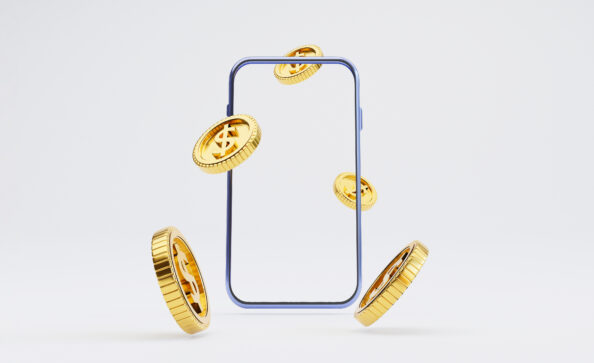
The art world is changing quickly, and Non-fungible Tokens (NFTs) are leading the way. With NFTs, creators can tokenize digital art and receive royalties for the works they create.
With NFTs, creators can tokenize digital art, music, and even tweets and receive royalties for their work. This means the artist can benefit from the sale of their artwork multiple times, rather than just once. Additionally, because NFTs are built on the blockchain, it makes them easier to track, verify, and trade. This makes them a great tool for artists who want to monetize their work and gain more recognition.
Creators can also benefit from the transparency of the blockchain. As all transactions are securely recorded, it makes it easier to track any potential copyright infringement or theft. By tokenizing their works, creators can also make their artworks more secure and harder to replicate, thus protecting their work.
NFTs open up a world of possibilities for creators to monetize and protect their digital art. With the help of the blockchain, creators can now receive royalties for their work and ensure its authenticity and rarity. This could be a game-changer for artists and creators looking to make a living from their digital works.
NFTs have a few unique characteristics that make them stand out from other digital art forms.
Verifiable
NFTs are tokenized on secure blockchain networks, meaning that their authenticity and ownership can be verified. This is great news for art collectors, as it ensures that their piece of art is safe and secure. Since the ownership of the art is stored on the blockchain, it is impossible to counterfeit or duplicate the art, giving it an extra layer of protection.
Indestructible
Unlike physical artworks, which can be damaged or destroyed, NFTs are digital and exist on the blockchain. This means that no matter what happens to the physical artwork, the NFT will always exist and can be preserved for generations.
Ownership
Once someone buys an NFT, they own the digital artwork, and no one else can claim or remove it from them. This is a huge benefit to digital art collectors, as it gives them complete control over their artwork and makes sure that it won’t be taken away from them.
NFT art is sold with a unique digital certificate that verifies its authenticity and ownership. This means that the artwork can be sold and transferred from one collector to another without any worries.
Creating NFT art is an exciting way to bring digital creativity to life and connect with a global audience of collectors. To get started, you’ll need a combination of creative tools, blockchain infrastructure, and a basic understanding of the NFT ecosystem.
1. A Cryptocurrency Wallet
You’ll need a crypto wallet (like MetaMask or Trust Wallet) to pay for gas fees and store your earnings. Load it with cryptocurrency (typically ETH) to cover the cost of minting your artwork as an NFT.
2. Digital Art Creation Software
Choose the right tool for your art style:
3. NFT-Supported Marketplaces
Once your art is ready, you’ll need a platform that allows minting and selling:
4. A Blockchain Network
While Ethereum is the most popular NFT blockchain, others may offer lower fees or different capabilities:
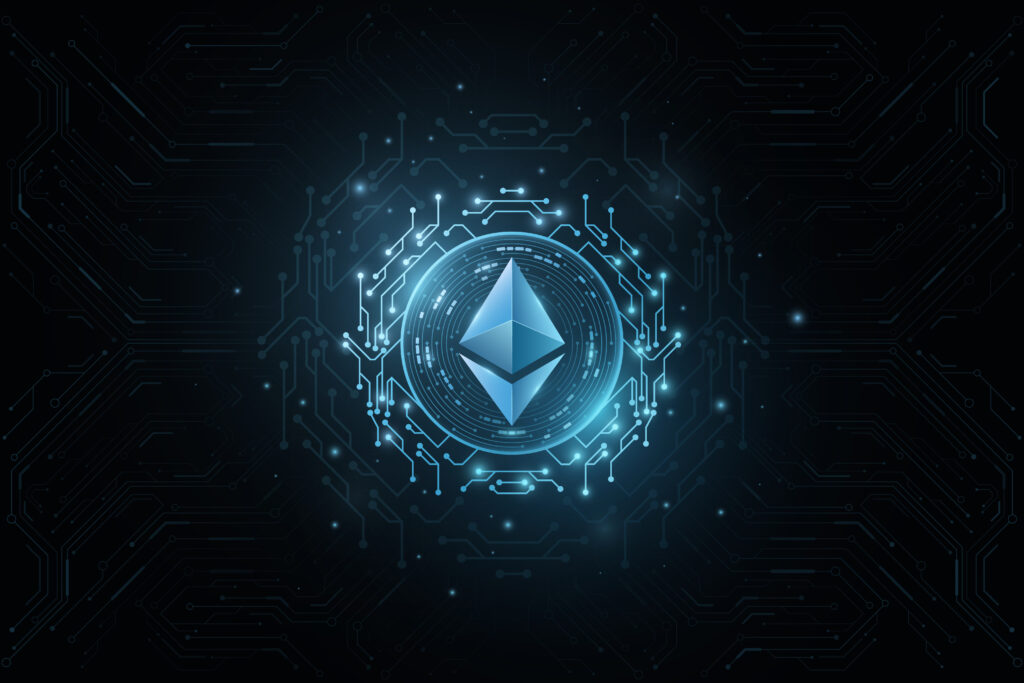
With this trend, a range of NFT blockchain platforms are becoming available for artists and creators to create, trade, and store unique digital art pieces.
Ethereum is the most popular blockchain platform, and it has grown in popularity since its launch in 2015. The platform is popular due to its support for smart contracts and its ability to support decentralized applications (dApps). This makes it perfect for creating and trading digital art, as it allows for trustless transactions and asset tracking. Ethereum also makes use of ‘gas’, which is used to pay for transactions on the network.
Tezos is a newer blockchain platform that has quickly become a favorite amongst those looking to create and trade digital art. Tezos stands out due to its use of ‘Proof of Stake’ consensus, which allows for faster and cheaper transactions compared to other networks. It’s also known for its high levels of security and reliability.
Polkadot is another platform that is gaining in popularity due to its ability to support multiple blockchains. This means that digital art and other collectibles can be stored in a secure environment on the Polkadot blockchain. Polkadot is also known for its scalability and its ability to support smart contracts.
Cardano is a blockchain platform that is quickly becoming popular due to its use of proof-of-stake consensus. This makes it a great choice for those looking for secure and reliable transactions. Cardano also has a high level of scalability, which allows it to support multiple blockchains and expand as needed.

Solana is another blockchain platform that is gaining in popularity due to its ability to support high transaction volumes. This makes it a great choice for those looking to trade digital art and other collectibles. It also has a high level of security and reliability, making it a safe choice for those looking to create or own NFTs.
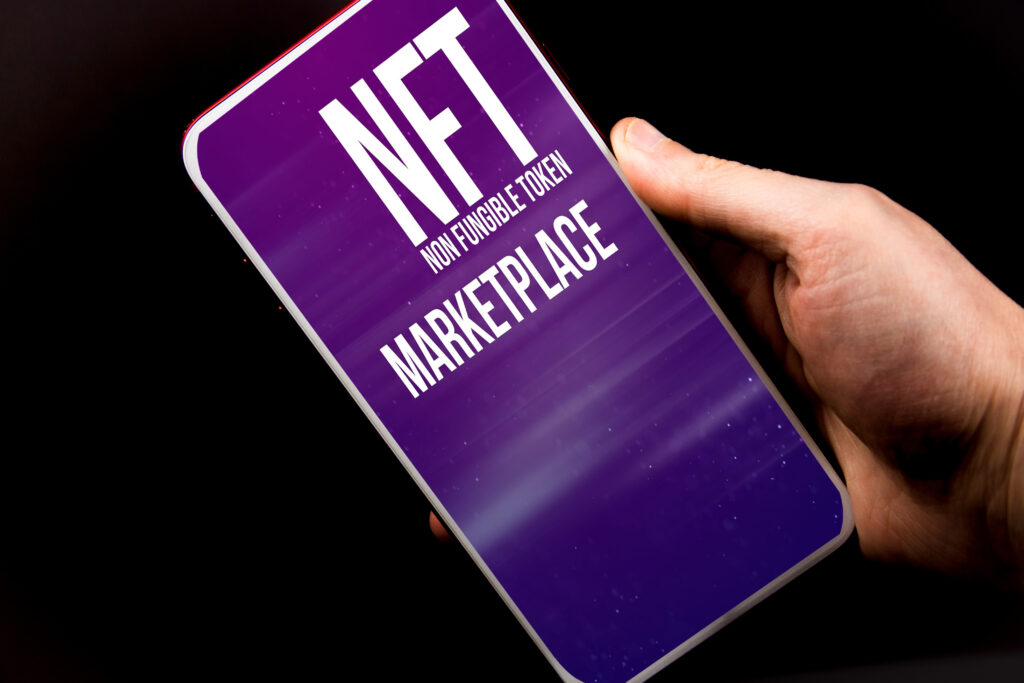
We’re here to provide an overview of some of the most popular NFT marketplaces.
Coinbase is one of the most popular NFT marketplaces, and it’s easy to see why. It’s the largest and most well-known cryptocurrency exchange, and it also offers NFTs. It has a wide range of NFTs, including art, collectibles, gaming items, and more.
Nifty Gateway
Nifty Gateway is a relatively new NFT marketplace, but it has quickly become one of the most popular. It’s easy to use and offers a great selection of art and collectibles. It also has its own native currency, NIFTY, which can be used to purchase NFTs.
SuperRare is another popular marketplace that focuses solely on art. It has a great selection of digital art from talented creators around the world. It’s also one of the few NFT marketplaces that offer a way for collectors to buy and sell art directly from each other.
Async Art
Async Art is an innovative marketplace that focuses on interactive digital art. It uses blockchain technology to allow creators to create and sell interactive art pieces. It’s an exciting new way to experience art and has quickly become one of the most popular NFT marketplaces.
MakersPlace is a popular marketplace that focuses on digital collectibles. It’s designed to make buying and selling digital collectibles easy and secure. It also offers its own native currency, MAKER, which can be used to purchase NFTs.
KnownOrigin
KnownOrigin is a popular marketplace that focuses on digital art. It has a wide range of art from talented creators around the world. It also has its own native currency, KNOWN, which can be used to purchase NFTs.
Foundation
Foundation is an innovative NFT marketplace that focuses on tokenizing physical assets. It allows users to tokenize physical assets such as art, real estate, and collectibles. It’s an exciting way to own physical assets in a digital form.
Zora
Zora is an NFT marketplace focused on digital art. It allows creators to showcase and sell their digital artworks to collectors. All artworks are verified on the Ethereum blockchain and sold in the form of ERC-721 tokens.
OpenSea is one of the largest NFT marketplaces. It allows creators to showcase and sell their digital artworks to collectors. All artworks are verified on the Ethereum blockchain and sold in the form of ERC-721 tokens.
MythMarket
MythMarket is a marketplace designed for creators of digital art and collectibles. It has a wide range of art and collectibles from talented creators around the world. It also has its own native currency, MYTH, which can be used to purchase NFTs.
Ready to turn your digital art into an NFT and sell it? Here’s a clear, beginner-friendly guide to help you through the process:
1. Define Your Concept
Start by deciding what kind of digital art you want to create. Think about the theme, format, and uniqueness of your work. Will it be 2D, 3D, generative, animated, or something interactive?
2. Choose a Blockchain
Select the blockchain where your NFT will live. Each has its pros and cons:
3. Set Up a Crypto Wallet
You’ll need a digital wallet (e.g., MetaMask, Trust Wallet) to hold your crypto and interact with NFT marketplaces. Be sure to fund it with the appropriate token (like ETH or MATIC) for minting.
If you’re looking to build your own custom NFT wallet or integrate one into your project, check out our service: NFT Wallet Development by ND Labs
4. Pick an NFT Marketplace
Popular options include:
Choose one based on your audience, budget, and technical preferences.
5. Upload & Mint Your Art
Follow your chosen marketplace’s steps to upload your artwork, fill in details (title, description, royalties, etc.), and mint it (i.e., publish it on the blockchain).
6. Set a Price & List It for Sale
Choose between fixed price, auction, or reserve listing. Price your NFT based on uniqueness, creator history, and comparable works. Once listed, your NFT is live for buyers!
Once your artwork is minted, here’s how to list and sell it on NFT marketplaces:
1. Connect Your Wallet
Log in to your chosen marketplace by connecting your wallet (e.g., MetaMask or WalletConnect).
2. Navigate to Your Profile
Find your newly minted NFT under your profile or collections.
3. Click “Sell” and Set Terms
4. Set Royalties (if not done earlier)
Decide the percentage you’ll earn from future resales (commonly 5–10%).
5. Monitor Offers and Sales
Once your NFT sells, earnings (minus platform fees) are sent to your wallet. You can re-list or transfer it depending on rights settings.
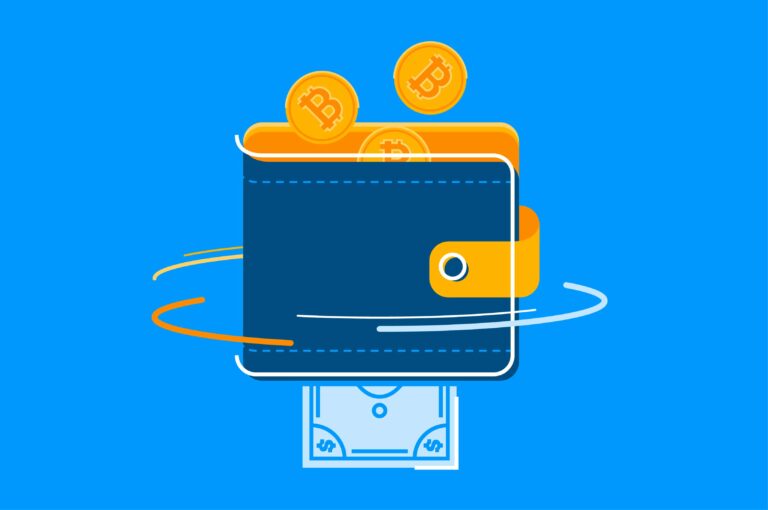
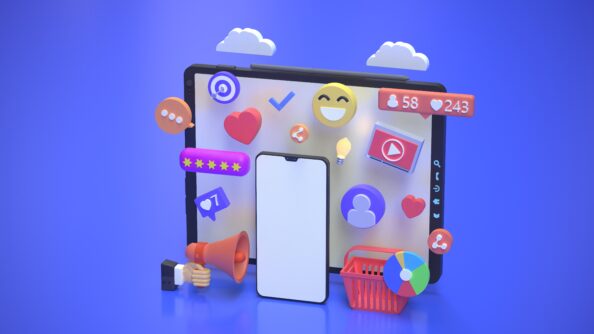
Promoting NFT art can be intimidating at first, but with the right strategies, you can get your creations in front of potential buyers and build a loyal collector base. Here are the most effective methods to market your NFT artwork in 2025:
Use platforms like X, Instagram, TikTok, and Facebook to share your art and build a following.
1. Leverage Social Media
#NFTart, #cryptoart, #NFTdrop2. Utilize NFT Marketplaces
List your NFTs on top platforms such as:
3. Build an Online Presence
Create your own website, portfolio, or blog to showcase your digital art journey.
4. Network and Collaborate
Join Web3 art communities, DAOs, Discord servers, and Telegram groups.
5. Run Specials and Promotions
Launch timed discounts, limited-edition drops, or giveaways.
Pro Tip: Consistency matters. Buyers often support artists they trust and follow. Keep posting, engaging, and updating your listings; even small actions add up over time.
NFT artworks have revolutionized the digital art market and are becoming the top investment opportunity in the crypto world. With 509,000 NFT artworks sold in March 2021 alone and total sales of $85 million, NFTs are a solid ROI on crypto investments.
As with any asset class, the value of NFT art is determined by the same principles of supply and demand. As the online community of collectors or buyers and investors grows, demand increases, and prices can rise. At the same time, as more artists see NFT art as a viable option for their creations, the supply increases.
In general, the rarer a piece is, the more likely it is to appreciate in value. This means that one-of-a-kind works by a popular artist can command higher sale prices than similar works with multiple copies available.
Another factor to consider is the potential for speculative investment. As more people become aware of NFTs, the value of certain works can rise due to investor demand. For this reason, it’s important to do your research before investing in any NFT artwork.
Overall, NFT art is an intriguing option for art collectors, as it offers the potential for both investment and appreciation. With the rise of blockchain technology and the digital-only art market, there’s no doubt that NFT art will continue to become more popular with investors. With the right research and understanding of the market, it can be a great addition to your portfolio.
The future of NFT art lies in its evolution from static collectibles to intelligent, interactive digital experiences. One standout example is Alice, an Ethereum-based NFT with the ability to self-learn and interact with its collectors—blurring the lines between art, AI, and identity.
Beyond the art world, mainstream industries are already exploring NFT technology:
As technology advances, we can expect NFT art to integrate with AI, augmented reality (AR), and virtual worlds, allowing for programmable, evolving, and personalized artistic expressions. Artists will no longer be limited to visual formats; NFTs will support full-on immersive storytelling, cross-media works, and live audience participation.
NFT art is more than a trend—it’s a transformative force in the digital creative economy. From virtual galleries and tokenized memes to AI-powered collectibles, NFT artworks are becoming a core part of how we create, distribute, and own art in the 21st century.
They already have proven applications across finance, fashion, gaming, music, virtual reality, and collectibles. Creators—whether independent artists, musicians, or global brands—are embracing NFTs to monetize digital content, connect with audiences, and retain control over ownership and royalties.
While the long-term trajectory of NFTs continues to unfold, one thing is clear: they have permanently changed how we perceive digital value.
Thinking of launching your own NFT project?
Get expert guidance from our ND Labs team for NFT development and consulting.